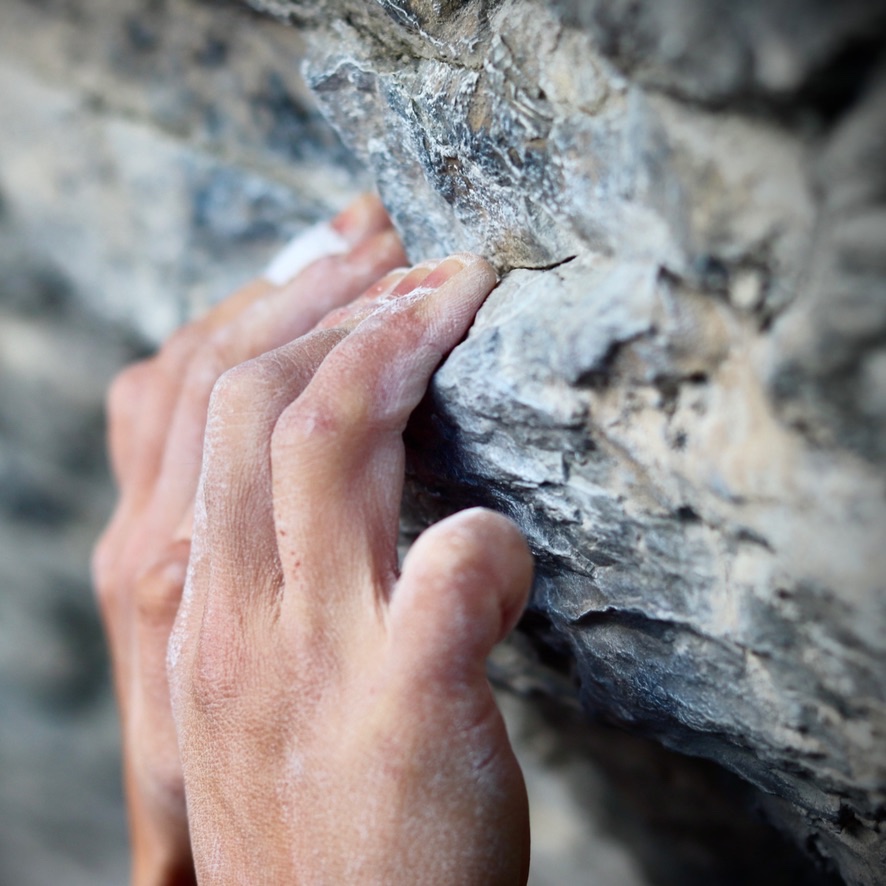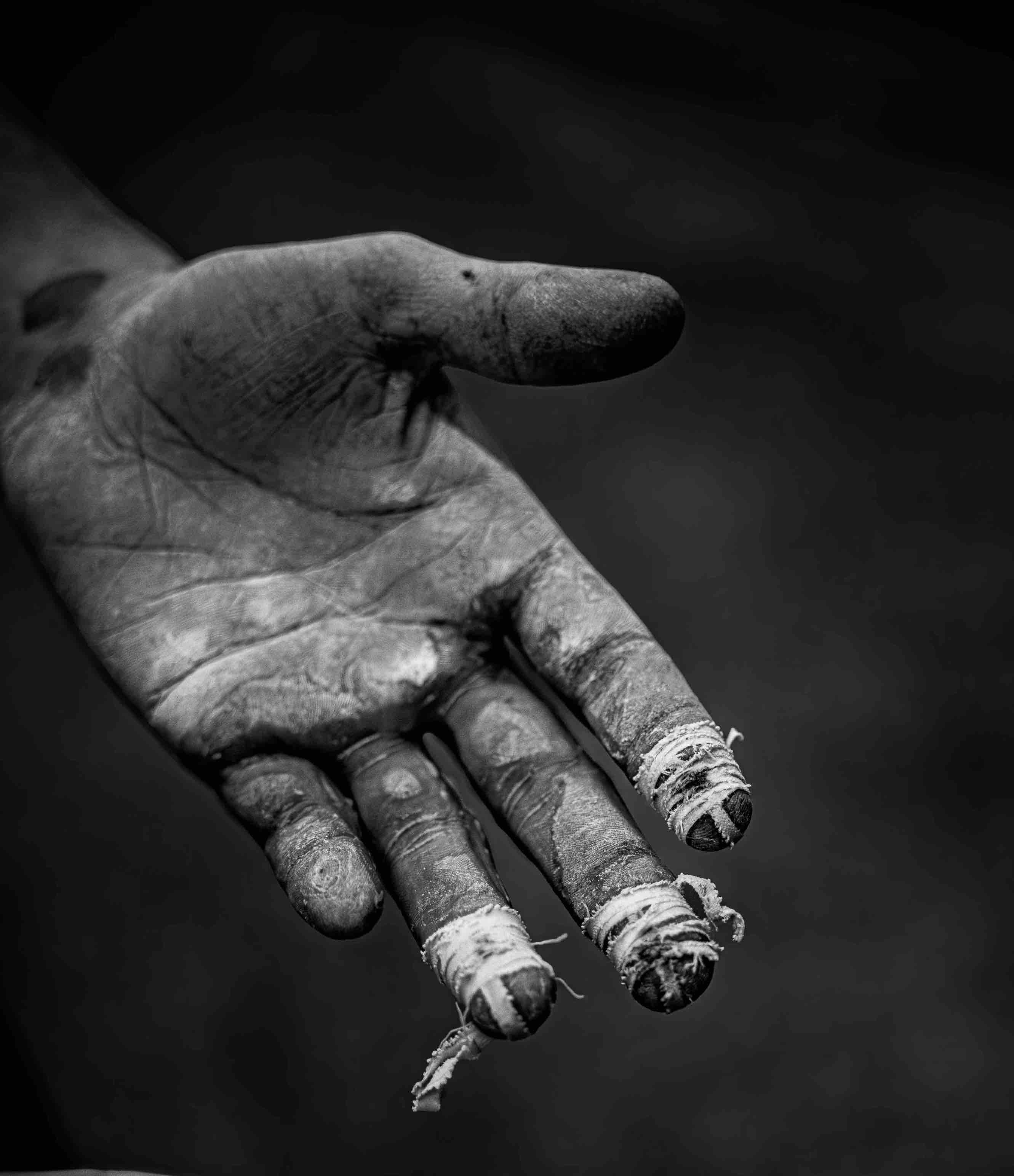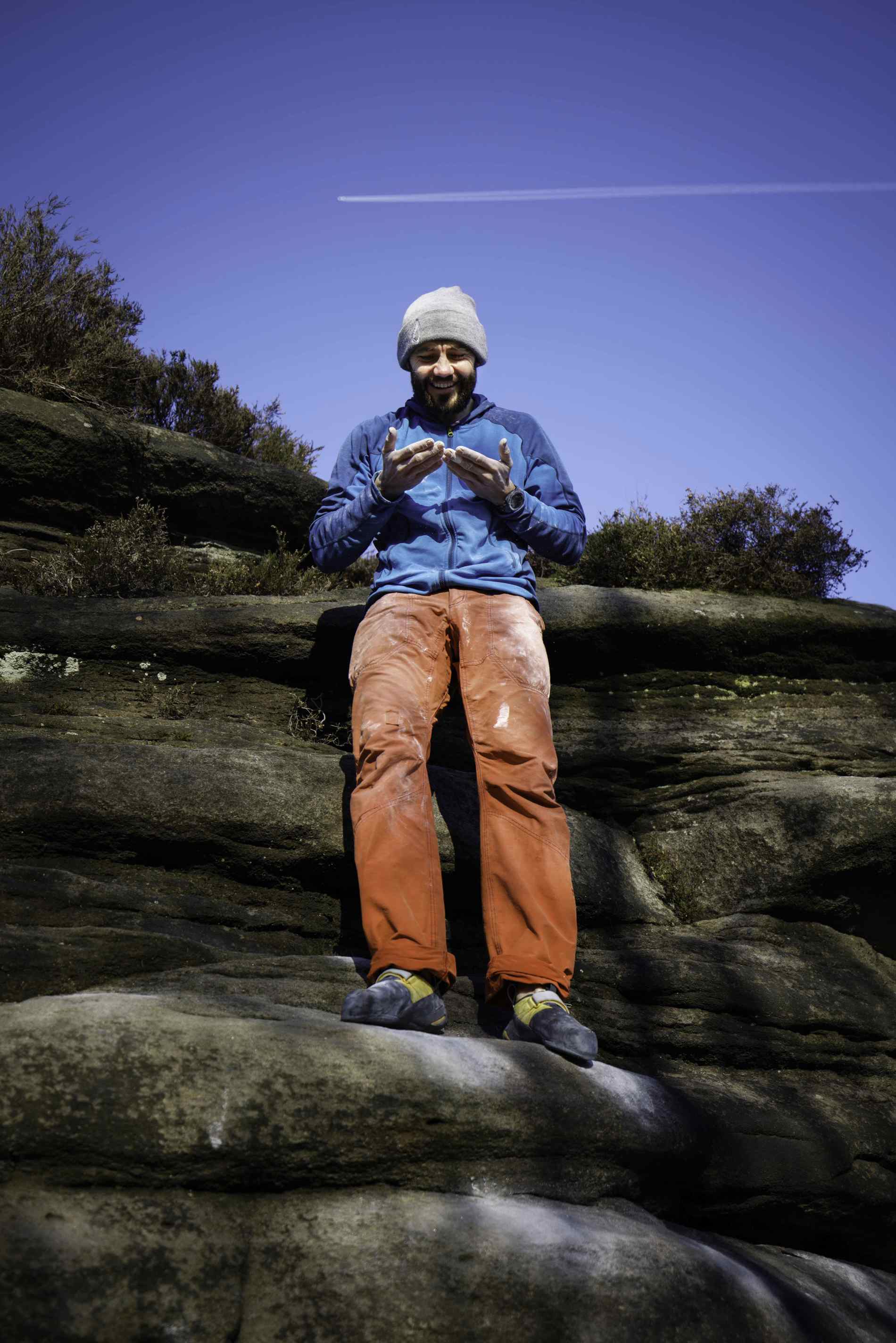The Best Chalk for Sweaty Skin
Our 6 tips for perfect climbing skin! 4 minute read
Sophie | August 15 2024 6 Tips for Perfect Climbing Skin
Much like having the right shoes and rubber, or having strong enough fingers for your climb, having your skin in a good condition is just as important for climbing. Too sweaty and you’ll slide off the holds, too dry and a dry fire punch in the face is imminent, and once a split or cut has opened up it spells the end of the session. So how to keep your delicate skin in perfect condition so you can keep on climbing?
As with many things, it’s about finding a balance of not too sweaty, and not too dry. Everyone’s skin is different, and generally speaking most people will fall into one of 3 categories: sweaty, neutral or dry skin. Here are our top tips for perfect climbing skin.

Preparation
1. Prepare your skin to be as neutral as possible
Before setting foot in a climbing centre, or heading out to the crag, there’s a lot you can do to get your skin in climbing shape. If you’re on the sweatier side, find a dehydrating product which will dry out the skin over time. Something like Rhino Skin Solutions Performance, Dry or Tip Juice is ideal (applied 2 to 3 times a week depending on skin sweatiness) - each of these is aimed at varying degrees of sweatiness or for ever increasing temperatures. They contain different amounts of methenamine, an antiperspirant which inhibits sweating and toughens the skin, Performance being a lighter amount of antiperspirant, and Tip Juice being the most concentrated. Dry is somewhere in between these two, think of it like a diluted form of the Tip Juice.
Those with naturally drier skin will need to prepare their skin in the opposite manner - overly dry skin can lead to dry firing off holds or the skin cracking and splitting open. Using a good moisturiser in the lead up to climbing sessions will help to keep the skin elastic and pliable for climbing. We recommend Rhino Skin’s Repair or Split+ for this as both absorb through the layers of skin to moisturise and nourish the younger skin coming through.
If you’re one of the lucky ones with pretty neutral skin, then the choice of drying or moisturising will come down to the expected conditions - for hotter temperatures some Performance or Dry will help stop your skin sweating, while some Repair will help to keep your skin more supple in the winter months.
During climbing
2. Dry or hydrate
Use a drying or hydrating pre climb product, depending on whether you have sweaty or dry skin and what the current conditions are like. Hotter days mean sweatier skin and so will need more drying. However, colder conditions lessen blood flow to the extremities and can cause the skin to feel glassier, so adding some hydration to the skin may be needed.
Tokyo Powder’s REACT is a brilliant and gentle alcohol based primer which can be used just before pulling onto a climb. It degreases and removes sweat, lasts for a few climbs and enhances the friction power of your chalk, meaning you sweat through your chalk less.
For those with drier skin (or if you have perhaps overdone the Tip Juice and your skin is feeling too dry), then Rhino Spit sprayed on to the hands before climbing will hydrate your skin so it’s nice and pliable for better grip. It’s a secret weapon when it comes to no tex holds too!
3. Sand Frayed Skin
It’s worth keeping a close eye on your skin throughout your session; prevention is better than cure when it comes to flappers! Where the rock or holds have started to fray your skin, take a moment to file the edges back with a sander before the frays become larger tears. Nowadays there are so many sanders and files to choose from, and we’d recommend finding one that you can replace the sand paper easily. The Crux Taco fits the bill very nicely and has a couple of decent edge profiles so you can work the sander on finger creases with ease.
Post climbing
4. Moisturise and Nourish
Once you’ve finished your session, give your hands a good wash to remove any remaining chalk. This prevents the skin over drying; skin repairs and heals itself when it’s on the moister side. A good moisturiser at this point will go a long way to helping your skin to regenerate and repair itself ready for the next session. Our go-to is Rhino Skin Repair as it absorbs into the skin quickly, and works through the layers of skin so even the younger, newer skin coming through will be conditioned.
5. Manage open splits or raw skin for faster healing
It’s tempting to forget about splits or raw skin now that you’re no longer grabbing holds, but the sooner you can start the healing process, the sooner you’ll be back pulling on those holds with fresh skin. For open cuts or splits, Rhino Skin Split is a magic bullet. Pack some of the lovely, healing beeswax formula into the cleaned cut and then loosely wrap some tape over it. This does a couple of things; it keeps the Split in place and stops it from getting rubbed off so it can work its magic, and secondly it creates a moist environment which helps to promote skin healing. After 24-48 hours (depending on the severity of the cut), you can remove the tape to let the cut breathe and gently dry out. Switch to Split+ at this point as is combines the all the benefits of beeswax with some additional healing agents to really accelerate skin regeneration.

In between sessions and longer non climbing periods
6. Sand regularly
Keep on top of uneven and calloused skin by regularly sanding your fingers and hands so your skin is nice and even. Remember, you’ll get tears and flappers where tough, dead skin meets softer skin.
In the lead up to a trip away, or for periods of non climbing, we recommend continuing to regularly sand your skin. It helps to remove the top dead layer of skin, and also encourages tougher skin to grow faster in the long term.
Everyone's skin is different, and the conditions at the wall or at the crag are ever changing so finding what works best for you will take a little trial and error. Remember to look after your skin, on and off the rock, and to stay hydrated for nice pliable climbing skin!



